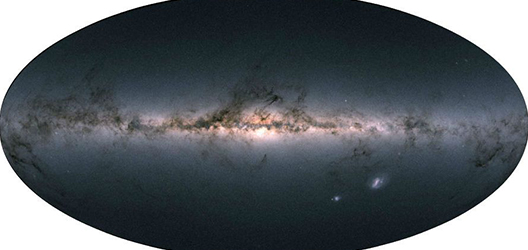4 May 2018
EXPERT COMMENT: How we’re using the largest ever recorded set of galactic data to study the stars
strophysicist Dr Phil Sutton explains the possibilities opened up by new data from the European Space Agency’s Gaia satellite.
The Gaia mission is a space-based observational survey of over 1 billion stars in our local neighbourhood, the Milky Way.
It will measure the precise position of stars using a technique known as astrometry. This will give a detailed three-dimensional map of the Milky Way and is complemented by spectroscopic measurements of the same stars.
Here, along with the precise position of stars in the Milky Way, the doppler effect is used to find relative velocities of stars by a shift in wavelength of their observed light.
The result is a detailed kinematic map of stars in our local neighbourhood, which is important, as we still do not fully understand why stars move the way they do in galaxies.
Future results from Gaia are likely to shape the future research of many astrophysicists.
For myself, I am currently looking at how the movement of the Sun, specifically the passage through the spiral arms, can affect the Earth.
Much of our understanding of the universe comes from how we observe astronomical objects move relative to us and one another.
Therefore, creating the most detailed kinematic map of the Milky Way will help us appreciate objects we cannot see and physics we currently do not understand.
I also have an interest in gravitational waves and the types of objects that act as sources and other objects that we can use to detect their presence.
The main science goal of another space telescope survey Kepler was to find new planets around other stars.
It succeeded with now thousands of planets discovered and confirmed.















